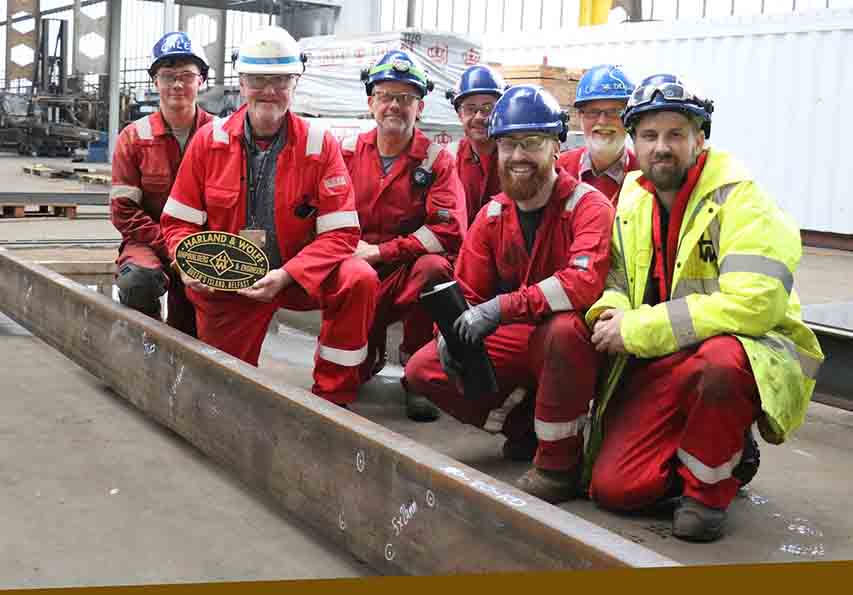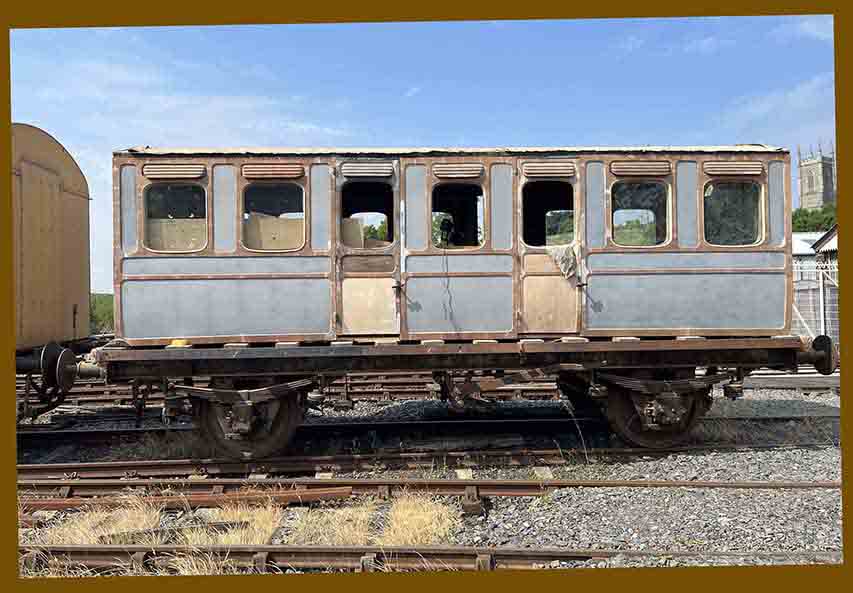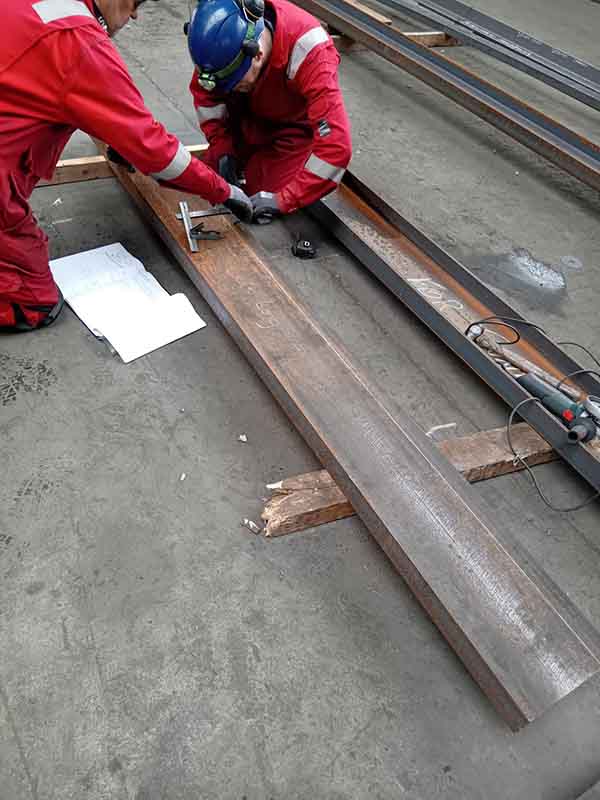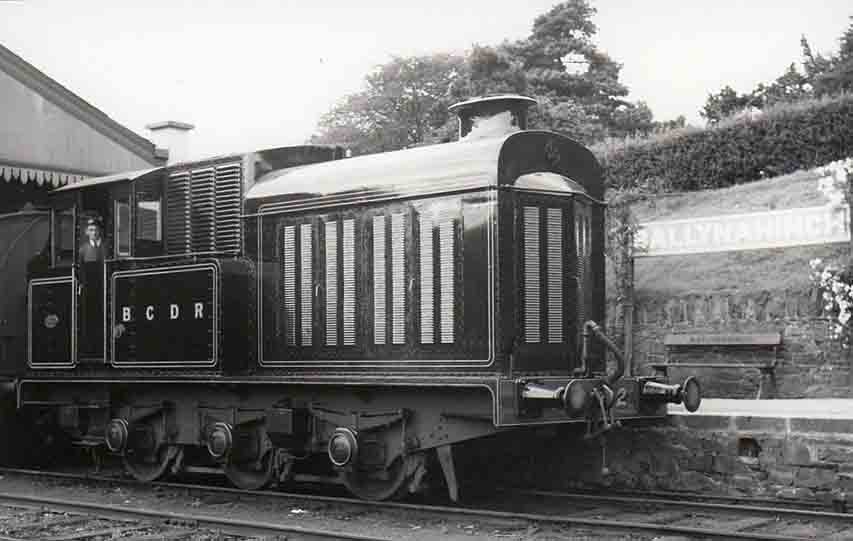Harland & Wolff Revives Its Railway Heritage
The Downpatrick and County Down Railway has partnered with the legendary Belfast shipbuilders Harland & Wolff, to help restore a unique Victorian railway carriage.
The project to recreate this unique railway carriage will serve as a pivotal training opportunity for Harland & Wolff apprentices, immersing them in heritage skills essential to fabrication and engineering, but also revives a long connection between the shipbuilder and Northern Ireland’s railways.

In the 1930s Harland and Wolff diversified their manufacturing expertise beyond shipbuilding to produce diesel locomotives that were used locally at Downpatrick and Ballynahinch, and as far afield as Canada, and this rich legacy is now being revitalised with the first railway vehicle to be built by the shipyard since the Second World War.
Built in 1862, carriage No. 33 is the sole survivor from Northern Ireland’s first railway company – the Ulster Railway – and is only one of a handful of Irish railway carriages to survive from the dawn of the railway era into modern times. As such, the carriage is actually closer in age to Stephenson’s Rocket than it is to most other railway vehicles in Northern Ireland’s railway museums.
The Ulster Railway was formed in 1836 and operated out of Great Victoria Street to Portadown and Armagh, later becoming the Great Northern Railway (Ireland) operating to Dublin. It is poignant that this vehicle’s restoration coincides with rail services on its former home at Great Victoria Street site recently ending in May 2024.

Robert Gardiner, Chairman of the Downpatrick & County Down Railway said: “We are thrilled to partner with Harland & Wolff on this historic project.
“Their enthusiasm for the project to recreate this Victorian gem has completely knocked us over, and is wonderful against the backdrop of our recovery from the devastating floods in November 2023, it is truly appreciated.”
He added: “Their passion and expertise are invaluable in the restoration of the Ulster Railway No. 33. This collaboration not only honours our shared industrial heritage but also provides an excellent training ground for apprentices to learn and master heritage crafts.”
No. 33 was a first class ‘family saloon”’with two large first-class compartments that were separated by a pair of lavatories. Wealthy families would hire these luxurious compartments for themselves for a day’s travel, which like Titanic kept them apart from Third Class travellers.
The carriage was retired from railway service in 1920 and the body was removed from its wheels and used as a railway office, and later a farm shed, until it was saved by the DCDR in 1987.

In addition to severe wood rot and structural problems, a major barrier to restoration was the prior removal of the chassis – or under-frame – in the 1920s. However, a century later, the recreation of this under-frame now serves as a major educational tool, marking a major milestone in the heritage railway sector in Northern Ireland.
The development of the design has followed best practice from fellow heritage railways in England, with the Isle of Wight Steam Railway providing specialist advice on the project as well.

The heritage railway, which has charitable status, first teamed up with Queen’s University, Belfast, with students undertaking research and design work into the frame, stress calculations as well as braking systems, with Harland and Wolff now coming on board to move to the fabrication stage, with the required steel being very kindly provided by long-time DCDR supporter Walter Watson Ltd Steel Stockholders in Castlewellan.
The project is being taken on as part of Harland & Wolff’s apprenticeship programme, offering students robust training in areas such as fabrication, welding, and mechanical engineering.
This hands-on project with the Downpatrick & County Down Railway allows apprentices to gain invaluable real-world experience, ensuring the transfer of critical skills from seasoned professionals to the workforce of tomorrow.
Background of the Downpatrick and County Down Railway:
Harland & Wolff designed and built two railway locomotives for use on the old railway line between Downpatrick and Ardglass, plus the Ballynahinch and Saintfield branch. Unfortunately neither locomotive was preserved. However, a surviving H&W wagon underframe, which is in poor condition, will be used to donate parts to the shipyard’s
The DCDR has been closed since Halloween 2023 since the flooding in Downpatrick but is hopeful of resuming operations within the current year. It is a fully accredited museum and registered as a charity with the Charity Commission and the DCDR was formed in 1985 and commenced its first public operations in 1987.
The Downpatrick & County Down Railway operates on part of the former Belfast & County Down Railway route, which closed to passenger traffic in 1950. The railway features a variety of historic Irish rolling stock, including steam and diesel locomotives, vintage carriages, and goods wagons, many of which have been restored by volunteers.
The railway’s station buildings and signal cabin are also significant historical structures, with the many buildings relocated stone-by-stone from across Northern Ireland.
Throughout the year, the DCDR hosts various special events including themed train rides and educational programmes which attract visitors from across Northern Ireland and beyond.
The railway project supported by a team of volunteer enthusiasts plays a key role in the local community. It provides educational opportunities for schools and groups, and serves as a unique venue for local events.

























